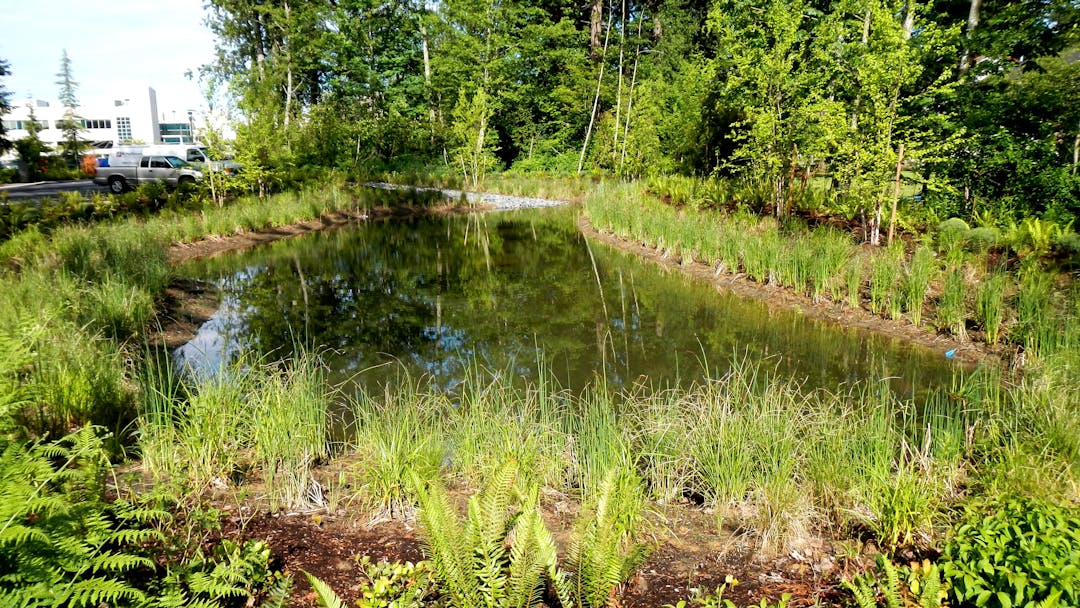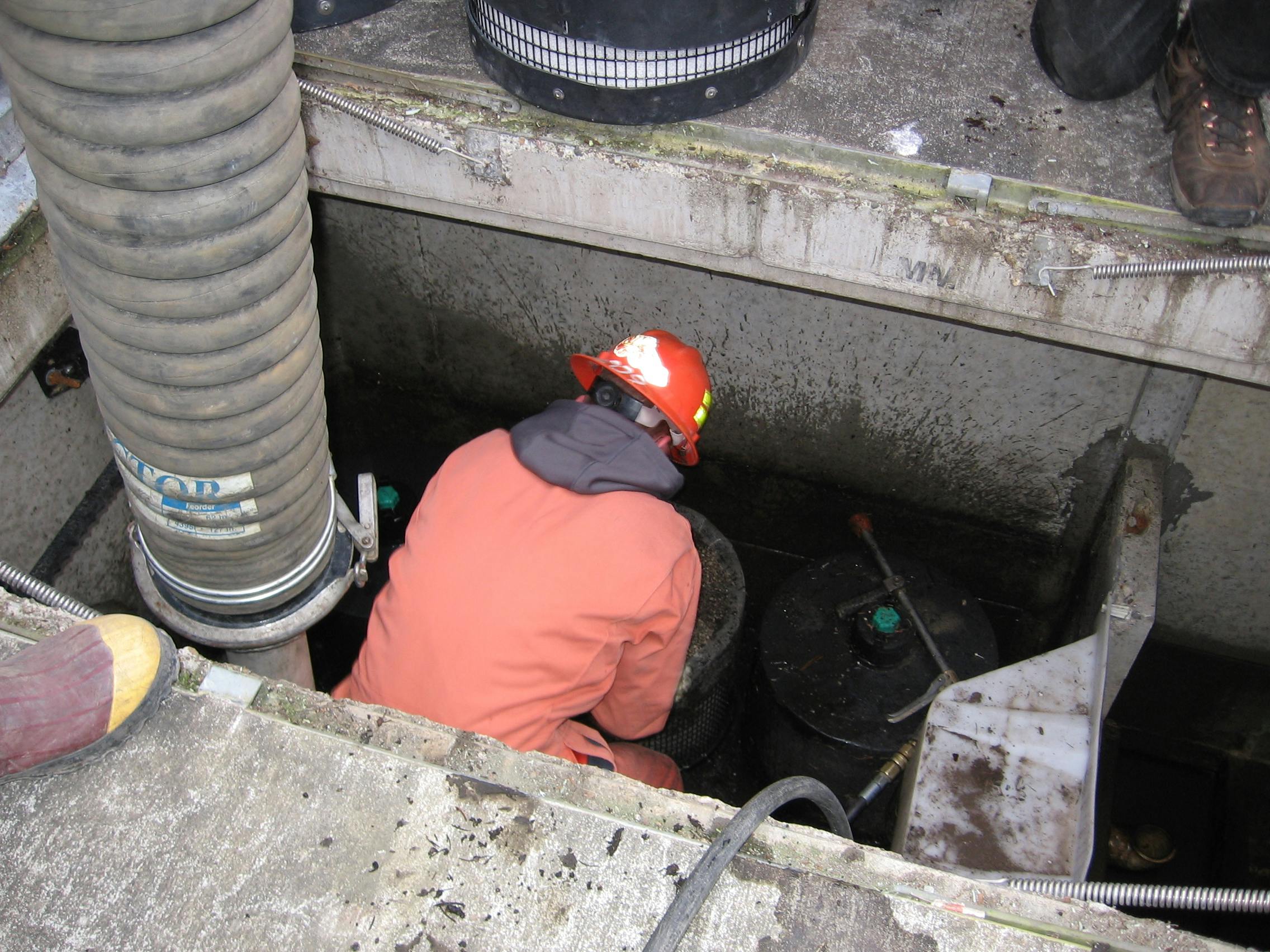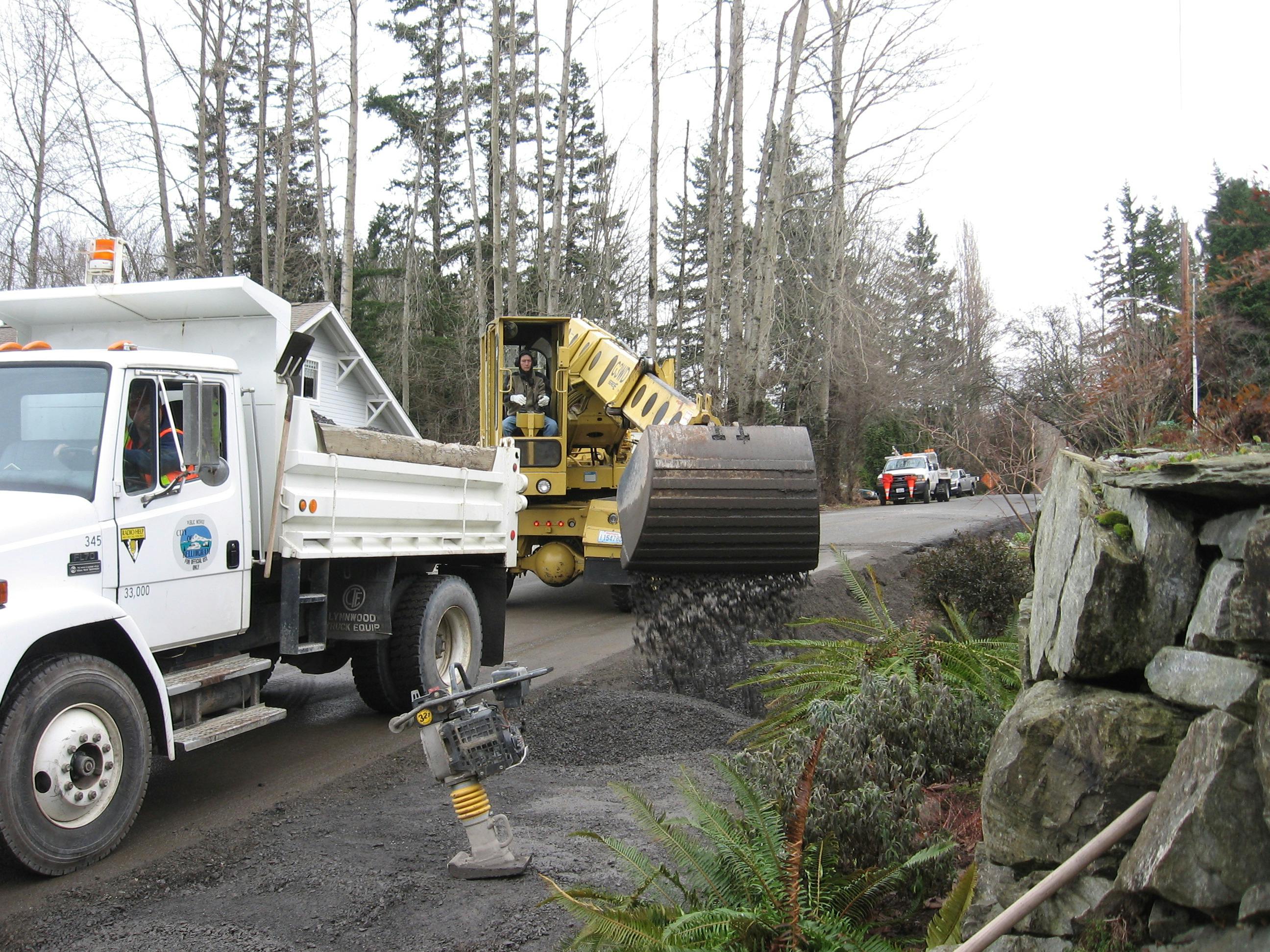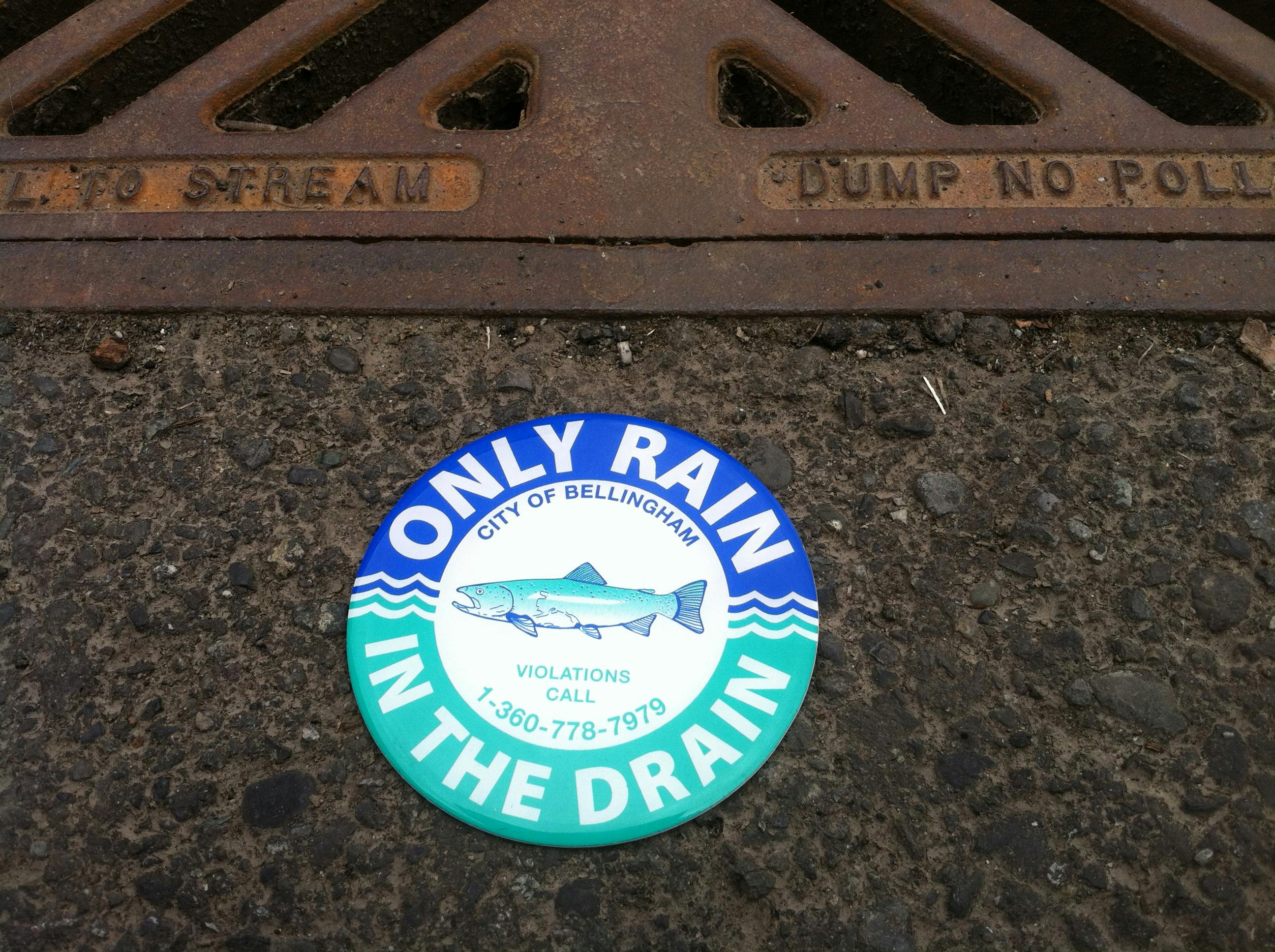2020 Surface and Stormwater Comprehensive Plan Update
Consultation has concluded

We want your input!
- Participate in the virtual open house (see Key Dates)
-
Ask a question during the public comment period (Ask a Question below)
-
Submit your comments (see Comment on the Draft items 1-5 below)
-
Take a quick survey (see Survey below)
Learn more!
-
Visit the City’s Storm and Surface Water Program webpage
- Review the Draft Plan (see Key Information to the right)
- Watch the Draft Plan presentation to City Council (see Key Information to the right)
- Review the FAQs (see FAQ to the right)
-
See photos and videos about stormwater projects at work (see bottom right)
Overview
We want your input!
- Participate in the virtual open house (see Key Dates)
- Ask a question during the public comment period (Ask a Question below)
- Submit your comments (see Comment on the Draft items 1-5 below)
- Take a quick survey (see Survey below)
Learn more!
- Visit the City’s Storm and Surface Water Program webpage
- Review the Draft Plan (see Key Information to the right)
- Watch the Draft Plan presentation to City Council (see Key Information to the right)
- Review the FAQs (see FAQ to the right)
- See photos and videos about stormwater projects at work (see bottom right)
Overview
The City of Bellingham (City) is updating its Surface and Stormwater Comprehensive Plan (Draft Plan) to identify and plan for population growth and development, ongoing operations and maintenance requirements, safety and property damage issues related to flooding, and environmental concerns for water quality and aquatic resources. The City’s Draft Plan and rate study update provide a road map for the City’s stormwater utility and Capital Improvement Plan (CIP) programs with implementation strategies for the next six years. This is the City's first major update since 2007. This plan serves as a guide for the City’s stormwater management with implementation strategies for the next six years.
The Surface and Stormwater Comprehensive Plan Update also includes the results of a rate study and outlines a cost-based surface water management rate that adequately funds existing and future surface water management utility operations, outlines a prioritized CIP to meet service level goals, and addresses State and Federal regulatory requirements (NPDES).
Additionally, the Draft Plan identifies capital improvement needs (water quality improvement, infrastructure renewal and replacement, and fish passage projects), surface and stormwater program management requirements, and associated cost estimates for City budgeting purposes.
The Draft Plan identifies:
- Background information on the City’s stormwater infrastructure, water bodies, stormwater modeling, and planning
- Considerations and risks from climate change
- The City’s fish passage prioritization program to address fish barriers
- Details about water quality, facility retrofit, and stormwater conveyance improvement projects
- An in-depth review of the City’s financial policies, program funding, and rate structure and details capital improvement funding scenarios and outlines strategies to help meet the City’s stormwater goals
For more information about the Surface and Stormwater Comprehensive Plan update, see Learn More below and the FAQ to the right.
-
We welcome your feedback!
Share We welcome your feedback! on Facebook Share We welcome your feedback! on Twitter Share We welcome your feedback! on Linkedin Email We welcome your feedback! linkPlease take a look at the following five key areas of the Draft Plan where the City is seeking feedback. Thank you for taking time to comment!
If you have any questions about the Draft Plan, please use the Ask a Question button (above). City staff and we will get back to you shortly.
Responses to all comments and questions will be provided at the end of the public comment period.
-
1. Scenarios for permit fees in the Draft Plan
Share 1. Scenarios for permit fees in the Draft Plan on Facebook Share 1. Scenarios for permit fees in the Draft Plan on Twitter Share 1. Scenarios for permit fees in the Draft Plan on Linkedin Email 1. Scenarios for permit fees in the Draft Plan linkPermit fees cover the cost of permitting and inspection. As part of the Draft Plans' cost-of-service analysis, the City requested additional assistance with updating its permit fees. Permit fees are customer charges for inspection and plan review of construction activities. These ensure that the developer or contractor is adhering to City regulations and standards when impacting the City's stormwater system.
Three scenarios were evaluated for cost recovery of permit-related stormwater services:
- full cost recovery for services
- 25% subsidy for services
- 50% subsidy for services
For more details on Permit Fees, see Section 10.9 of the Draft Plan.
What feedback do you have about these three scenarios for permit fees? Share your comments below.
-
2. Scenarios for property owners' monthly stormwater utility fees
Share 2. Scenarios for property owners' monthly stormwater utility fees on Facebook Share 2. Scenarios for property owners' monthly stormwater utility fees on Twitter Share 2. Scenarios for property owners' monthly stormwater utility fees on Linkedin Email 2. Scenarios for property owners' monthly stormwater utility fees linkThe Draft Plan recommends changes to stormwater utility fees that developed property owners pay. Fees are based on a range of potential capital and program improvement scenarios. Four surface and stormwater utility fee scenarios are included in the plan:
- one that results in no rate increase which would reduce overall service
- three scenarios resulting in low, medium, and high rate increases
The rate study in Chapter 10 of the draft plan also includes an equitability analysis that recommends adjustments to existing rates so that fees are more appropriately assessed and equitably distributed across the City’s surface and stormwater utility rate classes based on a cost of service model. In other words, those properties that have a larger impact on the stormwater system will pay a larger fee than properties with a smaller impact. This represents a redistribution of fees to more fairly align across all rate classes.
Owners of all developed properties in the City are obligated to pay a monthly stormwater utility fee which is based on the amount of impervious/hard surface on their property. The Draft Plan recommends changes to these fees based on a range of potential capital and program improvement scenarios. Public Works has developed packages of projects that represent a variety of levels of service and cost to the City and its rate payers.
The Storm and Surface Water Utility provides a dedicated and reliable means of funding the required improvements and maintenance of the stormwater system in Bellingham. This is accomplished through the collection of fees. These fees allow the City to undertake new capital projects and enhance existing programs. These fees also pay for replacement of aging facilities to address flooding and water quality, and efforts to improve fish access and habitat, and protect and restore aquatic resources.
In addition, fees also facilitate compliance with state and federal water resource regulations. Non-capital expenditures—such as planning, regulatory compliance, operations and maintenance, and public education—are important parts of the program.
For more details on monthly stormwater utility fees, see Section 10.9 of the Draft Plan.
What feedback do you have about property owners’ monthly stormwater fee scenarios? Share your comments below.
-
3. Scenarios for system development charges in the Draft Plan
Share 3. Scenarios for system development charges in the Draft Plan on Facebook Share 3. Scenarios for system development charges in the Draft Plan on Twitter Share 3. Scenarios for system development charges in the Draft Plan on Linkedin Email 3. Scenarios for system development charges in the Draft Plan linkAnother type of fee is paid by property owners when they apply to the City to develop their property. When properties are developed in the City, they are required to pay an additional fee called a System Development Charge which recovers the costs of increasing the capacity of existing stormwater facilities to handle increased levels of runoff associated with development. This is important because development often increases impervious surfaces—those that don’t allow water to soak in - which create higher amounts of stormwater runoff that must be managed downstream by the City.
The Draft Plan proposes three scenarios for the System Development Charge:
- full cost recovery for services
- 75% cost recovery for services
- 50% cost recovery for services
The fees do not cover the cost of service. The difference, or subsidy, is made up by bimonthly utility rate payers. The Draft Plan shows how the additional costs are addressed where costs for development are not fully recovered.
For more details on System Development Charge Scenarios, see Section 10.8 of the Draft Plan.
What feedback do you have about system development charge scenarios? Share your comments below.
-
4. Recommendations for the City's Capital Improvement Plan (CIP)
Share 4. Recommendations for the City's Capital Improvement Plan (CIP) on Facebook Share 4. Recommendations for the City's Capital Improvement Plan (CIP) on Twitter Share 4. Recommendations for the City's Capital Improvement Plan (CIP) on Linkedin Email 4. Recommendations for the City's Capital Improvement Plan (CIP) linkOne of the components of the Draft Plan is a Capital Improvement Plan which identifies needed capital improvements for stormwater runoff (conveyance pipes, stormwater detention and treatment, habitat improvements, and removal of fish migration barriers). A capital improvement is the addition of a permanent structural change or the restoration of some aspect of a property that will either enhance the property's overall value, prolong its useful life, or adapt it to new uses.
A CIP is a tool that can be used by a municipality to prioritize which stormwater maintenance or capital projects should be funded next when funds become available. At a minimum, a CIP should include:
- A list of proposed projects prioritized according to a city-approved ranking system
- A description of each proposed project
- A description of the problem(s) each proposed project addresses
- Estimated total costs to design, permit, and construct each project
The stormwater CIP in the Draft Plan is unique to Bellingham and addresses the City's specific needs and priorities. The ranking system in a CIP is customized to Bellingham and is meant to be a “living document” that the City can update as projects are completed and new ones are added or to address emergent problems or issues as they arise.
For information about the City's CIP and staff recommendations to City Council, see Section 8.5.2 in the Draft Plan.
What feedback do you have about these recommendations? Share your comments below.
-
5. Proposed changes to credits, exemptions, or adjustments to stormwater utility fees in the Draft Plan
Share 5. Proposed changes to credits, exemptions, or adjustments to stormwater utility fees in the Draft Plan on Facebook Share 5. Proposed changes to credits, exemptions, or adjustments to stormwater utility fees in the Draft Plan on Twitter Share 5. Proposed changes to credits, exemptions, or adjustments to stormwater utility fees in the Draft Plan on Linkedin Email 5. Proposed changes to credits, exemptions, or adjustments to stormwater utility fees in the Draft Plan linkThe City currently provides several credits that can be applied against customers’ bimonthly stormwater utility bills. The Draft Plan proposes eliminating some the credits contained in the Bellingham Municipal Code. These recommended changes to the credits were decided based on the effectiveness of the credits and impact on the City’s stormwater system.
The Draft Plan proposes to eliminate credits for the following:
- Qualified existing stormwater facilities, which includes: Any property with properly maintained water quality and quantity facility that meets or exceeds the design requirements of the 1992 Department of Ecology Stormwater Technical Manual; and Any property that has an active and valid NPDES permit
- Public education credits
- Credits for partially gravel or approved pervious surfacing including customers with at least 6,000 sq ft of gravel (20% credit), and pervious surfaces meeting infiltration standards on the pervious surface square footage (50% credit)
At present rate levels, the elimination of these credits results in an increase of approximately $500,000 in revenue per year.
The Draft Plan proposes to maintain credits for the following:
- Credits for qualified existing stormwater facilities with discharge limits will be maintained.
- The City also provides a credit for lower-income and senior citizens but currently does not have this credit in the BMC. The City intends to maintain this credit and add it to the BMC.
The Draft Plan proposes to add a new credit:
- Finally, a credit of a minimum of 10% shall be applied to any new or remodeled commercial building that installs a rainwater harvesting system properly sized to utilize the available roof surface of the building.
For more information on Exemptions, Credits and Adjustments, see Section 10.7 of the Draft Plan.
What feedback do you have about these proposed changes? Share your comments below.
Who's Listening
-
Phone (360) 778-7799 Email jporter@cob.org
Key Information
Key Dates
-
AUGUST 31, 2020
2020 Surface and Stormwater Comprehensive Plan Update has finished this stageCity Council Presentation
Presentation of City’s 2020 Surface and Stormwater Comprehensive Plan and rate study update to City Council.
Public Comment Opens
The public is welcome to provide comment on the Draft Surface and Stormwater Comprehensive Plan through this website or by participating in the Virtual Open House scheduled for September 9.
-
SEPTEMBER 9, 2020
2020 Surface and Stormwater Comprehensive Plan Update has finished this stageVirtual Open House
A virtual open house was offered. Watch the recording to learn about the update to the City's Surface and Stormwater Comprehensive Plan. City staff and consultants presented the key aspects of the plan and answered questions.
To view, visit: https://cob.org/wp-content/uploads/Bellingham-SW-Comp-Plan-Public-Outreach-Presentation.mp4
-
SEPTEMBER 28, 2020
2020 Surface and Stormwater Comprehensive Plan Update has finished this stageComprehensive Plan Adopted by Council
Staff shared a summary of public comment and the final Comprehensive Plan including the draft rate ordinance with City Council. Council adopted the plan by resolution.
-
November 23, 2020
2020 Surface and Stormwater Comprehensive Plan Update is currently at this stagePublic Comment Welcome
Staff will review all comments and incorporate feedback into the draft rate ordinance amendment until City Council adaption.
-
NOVEMBER 2020
this is an upcoming stage for 2020 Surface and Stormwater Comprehensive Plan UpdateCity Council Meetings
Staff will present a Draft Stormwater Rate Ordinance to City Council for review, discussion, and final decision on November 9 and 23.
FAQs
- 1. Where can I learn more about the City’s Stormwater Management program?
- 2. What is in the City's stormwater comprehensive plan update?
- 3. What does a Surface and Stormwater Comprehensive Plan do?
- 4. When was the City's last surface and stormwater comprehensive plan updated?
- 5. What are the three primary types of surface and stormwater fees?
- 6. What are the City's responsibilities regarding stormwater?
- 7. What is a Capital Improvement Plan (CIP)?
- 8. What are the City's stormwater requirements?
- 9. How does the Federal NPDES program impact Bellingham's stormwater management?
Videos
-
 Click here to play video
Where does our rainwater go and what does it take with it?
Here in Bellingham, we deal with our fair share of rain. When that rain falls onto the ground, it’s called stormwater. In this informational video, learn why and how the Public Works Department takes care of all that stormwater - before it reaches our City’s waterways.
Click here to play video
Where does our rainwater go and what does it take with it?
Here in Bellingham, we deal with our fair share of rain. When that rain falls onto the ground, it’s called stormwater. In this informational video, learn why and how the Public Works Department takes care of all that stormwater - before it reaches our City’s waterways.
-
 Click here to play video
Restoring Padden Creek Habitat - Looking Downstream
This video shows the Padden Creek Daylighting habitat restoration project as it changes over time since its construction in 2015. This uses photos submitted by Bellingham community members and visitors from July 2017 to July 2019.
Click here to play video
Restoring Padden Creek Habitat - Looking Downstream
This video shows the Padden Creek Daylighting habitat restoration project as it changes over time since its construction in 2015. This uses photos submitted by Bellingham community members and visitors from July 2017 to July 2019.
-
 Click here to play video
Restoring Padden Creek Habitat - Looking Upstream
This video shows how the Padden Creek Daylighting habitat restoration project is changing over time since its construction in 2015. It uses photos submitted by Bellingham community members and visitors from July 2017 to July 2019.
Click here to play video
Restoring Padden Creek Habitat - Looking Upstream
This video shows how the Padden Creek Daylighting habitat restoration project is changing over time since its construction in 2015. It uses photos submitted by Bellingham community members and visitors from July 2017 to July 2019.
-
Click here to play video Padden Creek Daylighting Project The City completed a restoration of Padden Creek’s stream channel and banks. An old footpath was re-routed and replanted with native vegetation, and in-stream work reduced stream bank erosion. The project completed in 2015 improves water quality, restores streamside vegetation and improves fish passage in Padden Creek.
-
 Click here to play video
Restoring Squalicum Creek Re-route - Looking Upstream
This video shows how the Squalicum Creek Re-route Phases 1 and 2 habitat restoration project has changed over time since its construction in 2015. It uses photos submitted by Bellingham community members and visitors from May 2018 to March 2020.
Click here to play video
Restoring Squalicum Creek Re-route - Looking Upstream
This video shows how the Squalicum Creek Re-route Phases 1 and 2 habitat restoration project has changed over time since its construction in 2015. It uses photos submitted by Bellingham community members and visitors from May 2018 to March 2020.







